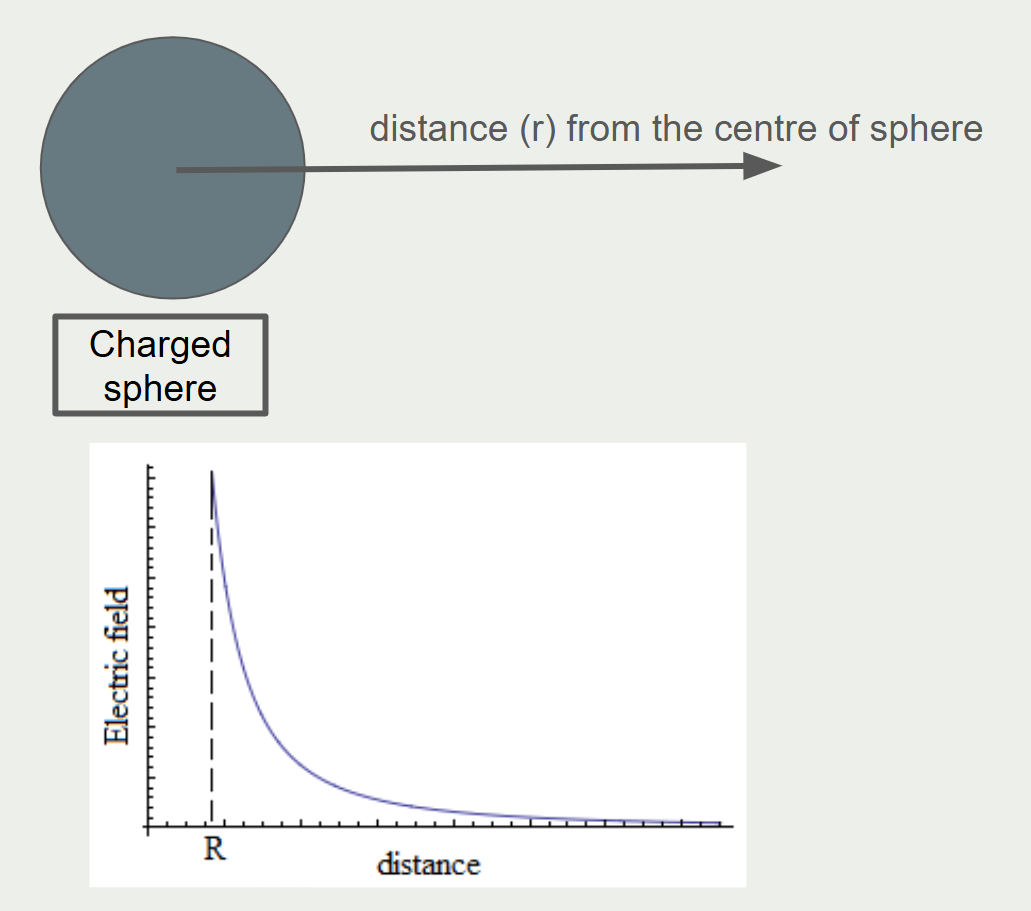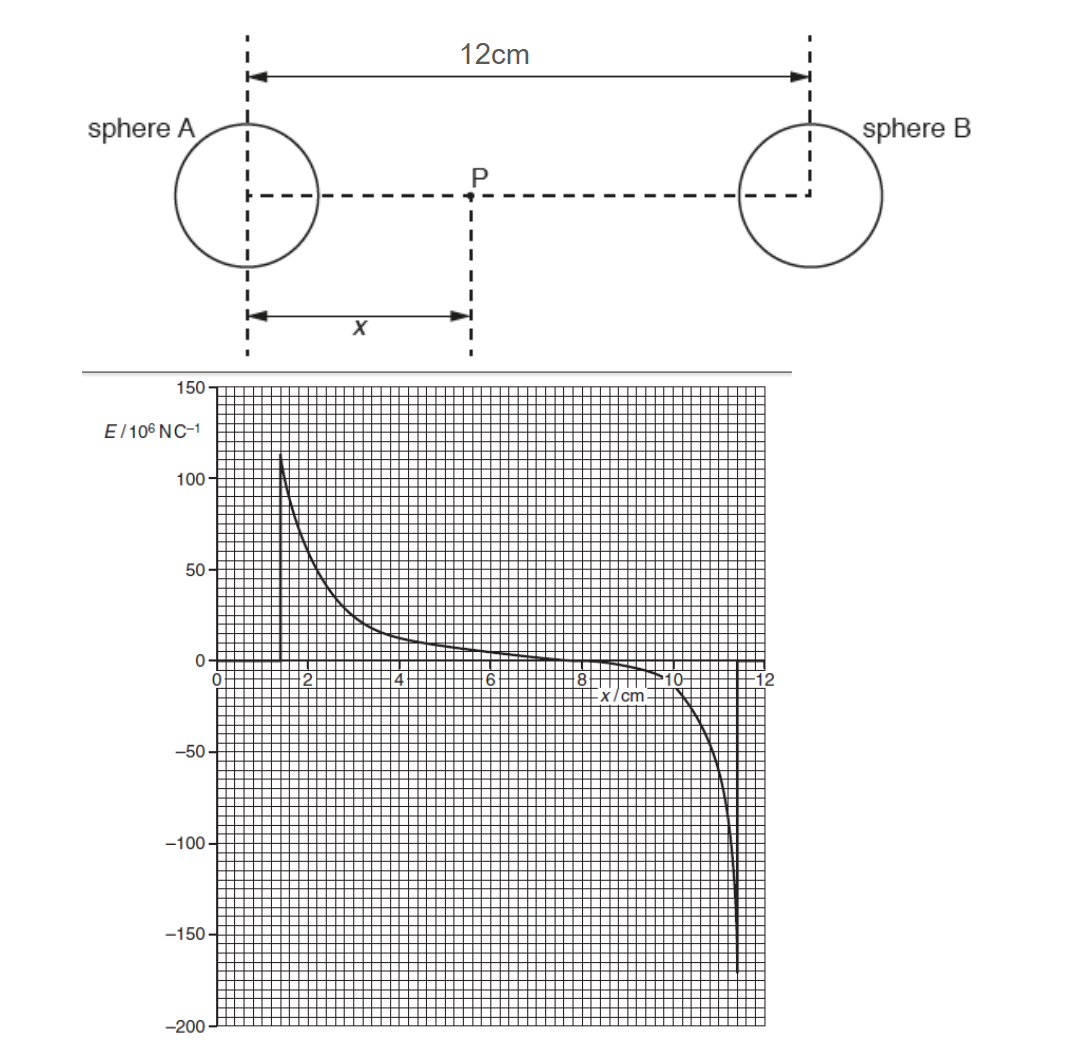Electric field strength graph for one sphere
- The electric field strength of a sphere is given by the equation \(E = \frac{Q}{4 \pi \varepsilon_0 r^2}\).
- Q represents the total charge on the sphere surface.
- \(𝜀_{0}\) is a constant that represents the permittivity of air.
- E is zero inside the sphere as the charges are evenly spaced out on the surface of the sphere in a way that produces 0 field strength in the sphere.
- E decreases as r increases outside the sphere as \(𝜀_{0}\) and Q remain the same. Thus, \( E \propto \frac{1}{r^2} \)

